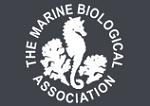APHOTOMARINE
An educational resource dedicated mainly to the photography
and diversity of marine life that can be found in coastal waters
and intertidal areas of Great Britain and Ireland by David Fenwick.

possibly Ciliata mustela
- lateral view anterior 1
Rockling fry / Mackerel midge
possibly Ciliata mustela
- lateral view head 1
Rockling fry / Mackerel midge
possibly Ciliata mustela
- lateral view head 2
Rockling fry / Mackerel midge
possibly Ciliata mustela
- in container / fins 1
Two juveniles were found stranded in a pool on the bar at Treath, Helford, Cornwall, 27.05.17.
Rockling fry / Mackerel midge
possibly Ciliata mustela
- head 1
Rockling fry / Mackerel midge
possibly Ciliata mustela
- dorsal fin 1
Rockling fry / Mackerel midge
possibly Ciliata mustela
- tail fin 1
Rockling fry / Mackerel midge
possibly Ciliata mustela
- lateral view 1
Rockling fry / Mackerel midge
possibly Ciliata mustela
- washed-up 1
Specimen sadly found dead in a sandy pool at Albert Reef, Penzance, Cornwall, 03.07.15.
Rockling are unusual in that they start life as fish shaped silvery fry that swim on the surface, hence their common name Mackerel Midge. As Rockling fry mature their shape and colour changes and they become darker, rounder in shape and bottom living.
Doug Herdson thinks the specimen here is of a fry of the Five-bearded rockling, Ciliata mustela.
APHOTOMARINE supports open source data recording and sharing for the benefit of wildlife, recorders, research, science and education. The project recommends the following websites and works with the following bodies and organisations.
The Marine Biological Association or MBA, based in Plymouth, is one of the world’s longest-running societies dedicated to promoting research into our oceans and the life they support. Since 1884 the MBA has been providing a unified, clear, independent voice on behalf of the marine biological community.It has a growing membership in over 40 countries.
The National Biodiversity Network or NBN is a charity that supports open source data sharing and recording supporting conservation, science and education. "Why do recorders need open source?". Simply because it supports the core values of wildlife recording and the free use of records and data over a very wide network that includes partners like the Natural History Museum.
The taxonomy used here is based on that of the following database, which is also used by the MBA, NHM and the NBN.
The World Register of Marine Species or WoRMS.

